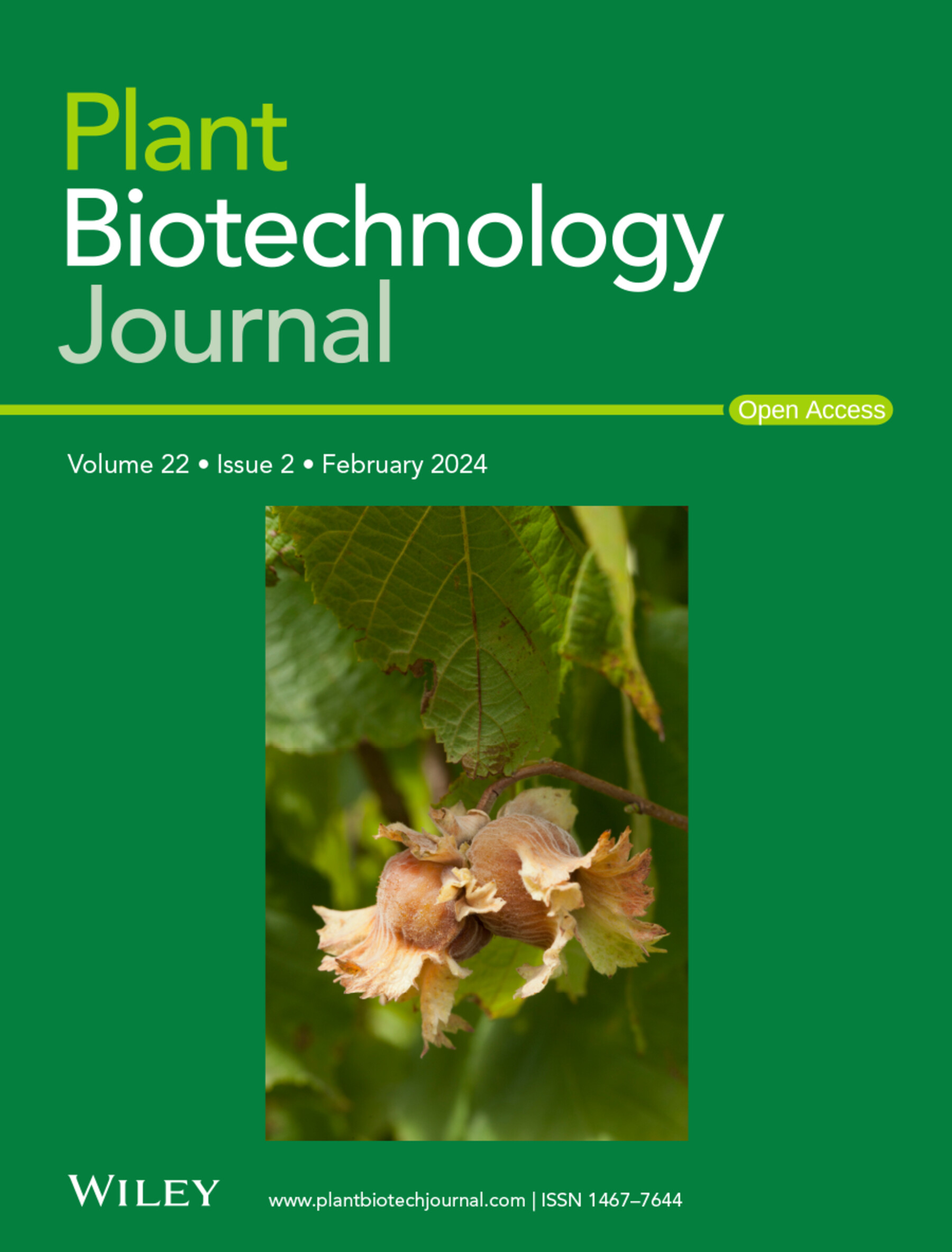Identification of HSSP1 as a regulator of soybean protein content through QTL analysis and Soy-SPCC network
IF 10.1
1区 生物学
Q1 BIOTECHNOLOGY & APPLIED MICROBIOLOGY
引用次数: 0
Abstract
Soybeans (Glycine max L. Merr.) are a major source of plant-based protein for human nutrition and livestock feed. Enhancing the protein content of soybean seeds is vital for meeting growing dietary needs and promoting sustainable agricultural practices. In this study, we first performed QTL (Quantitative Trait Loci) mapping analysis and constructed a Soybean Seed Protein Content Co-expression (Soy-SPCC) network to identify key genes associated with soybean seed protein accumulation. Next, we investigated the role of High Seed Storage Protein1 (HSSP1) in regulating soybean seed protein content through a comprehensive analysis. Functional validation through overexpression and gene knockout experiments demonstrated that HSSP1, a key component of the Soy-SPCC network, significantly influences seed storage protein levels. Particularly, HSSP1 enhances the expression of GmCG1 by binding directly to its cis-acting element, leading to increased protein content in soybean seeds. Furthermore, we performed a molecular module stacking breeding analysis of 120 candidate genes identified from the Soy-SPCC network, including HSSP1, to identify genetic variations associated with protein content. This study provides a novel perspective on soybean protein regulation. The identification of HSSP1 as a critical regulator offers valuable insights for developing high-protein soybean varieties and advancing breeding strategies aimed at improving soybean seed quality.通过QTL分析和大豆- spcc网络鉴定HSSP1是大豆蛋白含量的调控基因
大豆(Glycine max L. Merr.)是人类营养和牲畜饲料中植物性蛋白质的主要来源。提高大豆种子的蛋白质含量对于满足日益增长的膳食需求和促进可持续农业实践至关重要。在本研究中,我们首先进行了QTL (Quantitative Trait Loci)定位分析,并构建了大豆种子蛋白含量共表达(Soy-SPCC)网络,以确定与大豆种子蛋白积累相关的关键基因。接下来,我们通过综合分析研究了高种子储存蛋白1 (High Seed Storage protein, HSSP1)在大豆种子蛋白含量调控中的作用。通过过表达和基因敲除实验的功能验证表明,HSSP1是大豆- spcc网络的关键组成部分,显著影响种子储存蛋白水平。特别是,HSSP1通过直接结合GmCG1的顺式作用元件来增强GmCG1的表达,导致大豆种子中蛋白质含量的增加。此外,我们对从大豆- spcc网络中鉴定出的120个候选基因(包括HSSP1)进行了分子模块堆叠育种分析,以确定与蛋白质含量相关的遗传变异。本研究为研究大豆蛋白调控提供了新的视角。HSSP1作为关键调控因子的鉴定为开发高蛋白大豆品种和提高大豆种子质量的育种策略提供了有价值的见解。
本文章由计算机程序翻译,如有差异,请以英文原文为准。
求助全文
约1分钟内获得全文
求助全文
来源期刊

Plant Biotechnology Journal
生物-生物工程与应用微生物
CiteScore
20.50
自引率
2.90%
发文量
201
审稿时长
1 months
期刊介绍:
Plant Biotechnology Journal aspires to publish original research and insightful reviews of high impact, authored by prominent researchers in applied plant science. The journal places a special emphasis on molecular plant sciences and their practical applications through plant biotechnology. Our goal is to establish a platform for showcasing significant advances in the field, encompassing curiosity-driven studies with potential applications, strategic research in plant biotechnology, scientific analysis of crucial issues for the beneficial utilization of plant sciences, and assessments of the performance of plant biotechnology products in practical applications.
 求助内容:
求助内容: 应助结果提醒方式:
应助结果提醒方式:


